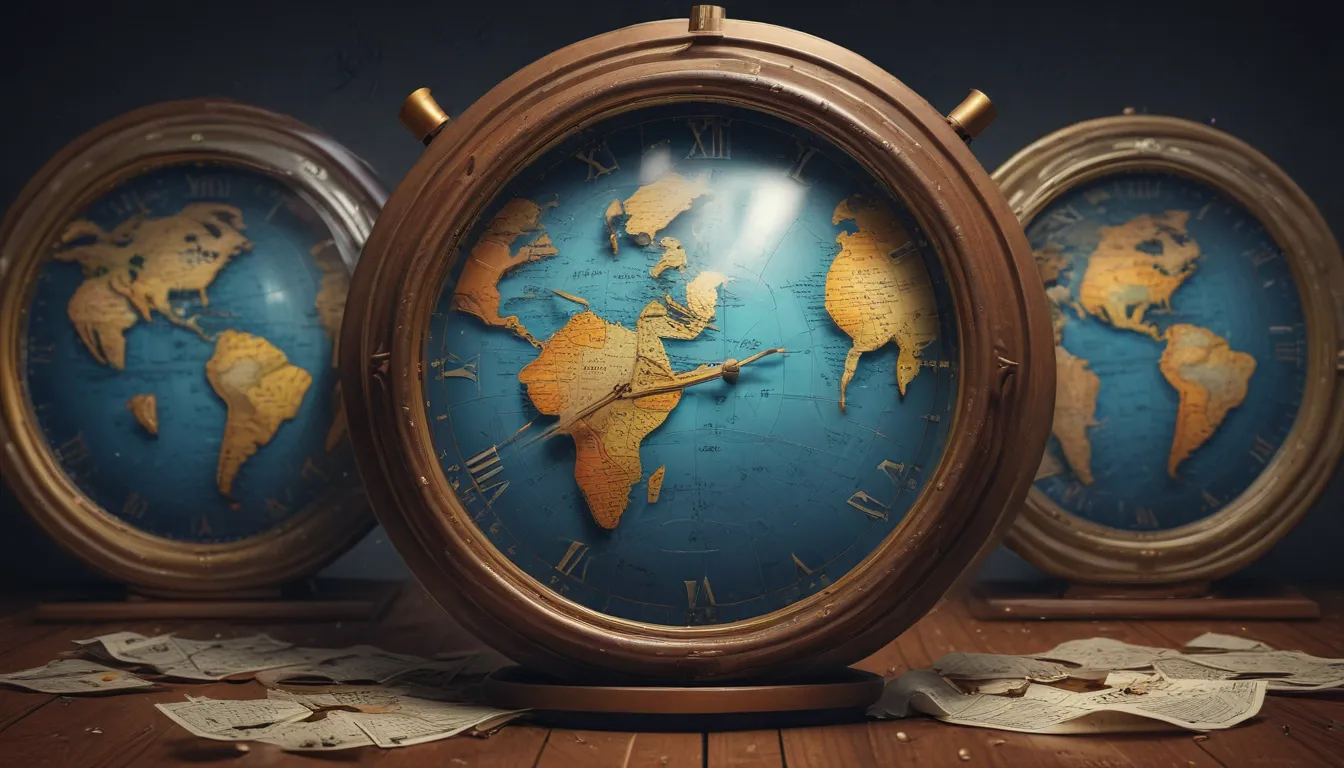A Note About Images: The images used in our articles are for illustration purposes only and may not exactly match the content. They are meant to engage readers, but the text should be relied upon for accurate information.
Welcome to the fascinating world of time zones, where the intricate management of time spans the globe. Time zones play a crucial role in our daily lives, impacting everything from international travel to scheduling meetings. While most of us have a basic understanding of time zones, there are astonishing facts that can surprise and delight even the most seasoned travelers. In this article, we will delve into 11 captivating facts about time zones that will broaden your horizons and deepen your appreciation for this essential aspect of our modern world.
The Evolution of Time Zones
Let’s start our journey by exploring the origins of time zones and how they have shaped our world.
-
Time zones were first introduced to facilitate train schedules: In the 19th century, the introduction of time zones was driven by the need to synchronize train schedules. Before time zones, each town operated on its own local solar time, causing confusion and inefficiency in the transportation sector.
-
The Prime Meridian determines Greenwich Mean Time (GMT): The Prime Meridian, located in Greenwich, London, serves as the reference point for Greenwich Mean Time (GMT). Time zones are then calculated based on GMT, with regions to the west subtracting hours and regions to the east adding hours.
-
There are a total of 24 time zones around the world: With the Earth divided into 24 time zones, each encompassing 15 degrees of longitude, the world operates on a system that keeps us in sync across vast distances.
Unusual Time Zone Quirks
As we explore further, let’s uncover some of the intriguing quirks and deviations in the world of time zones.
-
Some countries have adopted odd half-hour or even quarter-hour time offsets: While most time zones follow whole-hour offsets, some countries have chosen unique deviations. For example, India uses a time offset of UTC+05:30, and Nepal follows UTC+05:45.
-
China operates on a single time zone: Despite its considerable geographic size, China has opted to operate on a single time zone, known as China Standard Time (CST). This decision promotes national unity and simplifies administration.
-
Time zones in Antarctica are based on supply stations and research facilities: Due to the lack of a permanent population in Antarctica, time zones on the continent are determined by the various supply stations and research facilities operated by different countries.
Impact on Daily Life
Let’s now examine how time zones influence our daily activities and interactions on a global scale.
-
Time zones can affect your jet lag experience: When traveling across multiple time zones, your body may experience jet lag due to the disruption of your internal clock. The more time zones you traverse, the more adjustments your body needs to make.
-
The time difference between neighboring time zones can lead to unusual situations: In cases where neighboring time zones have a significant time difference, unique situations can arise. For instance, there is a three and a half-hour difference between Nepal Standard Time and Indian Standard Time, creating interesting scenarios in border towns.
-
Time zones can affect international business and communication: Managing international operations across multiple time zones requires careful planning and consideration of time differences. Scheduling meetings and coordinating activities can present challenges but are essential for effective global collaboration.
FAQs
Let’s address some common questions about time zones and further enrich our understanding of this complex system.
-
How were time zones invented? Time zones were created to standardize time measurements across the globe. The concept was pioneered by Sir Sandford Fleming in the late 19th century, who proposed dividing the world into 24 time zones based on the Earth’s rotation.
-
How are time zones determined? Time zones are determined based on the Earth’s division into 360 degrees of longitude. Every 15 degrees represents one time zone, with the Prime Meridian (0 degrees longitude) serving as the reference point for Greenwich Mean Time (GMT).
-
How many time zones are there? There are 24 time zones in the world, each representing a different region. These time zones are offset from GMT by one hour increments, with some exceptions based on geographical or political factors.
Conclusion
In conclusion, time zones are a fundamental aspect of our interconnected world, shaping how we navigate time and space on a global scale. By delving into the history, science, and peculiarities of time zones, we gain a deeper appreciation for the ingenious system that keeps our world running smoothly. From facilitating train schedules to enabling international communication, time zones play a vital role in our daily lives. So, next time you glance at the clock, remember the intricate web of time zones that underpins our modern society.






